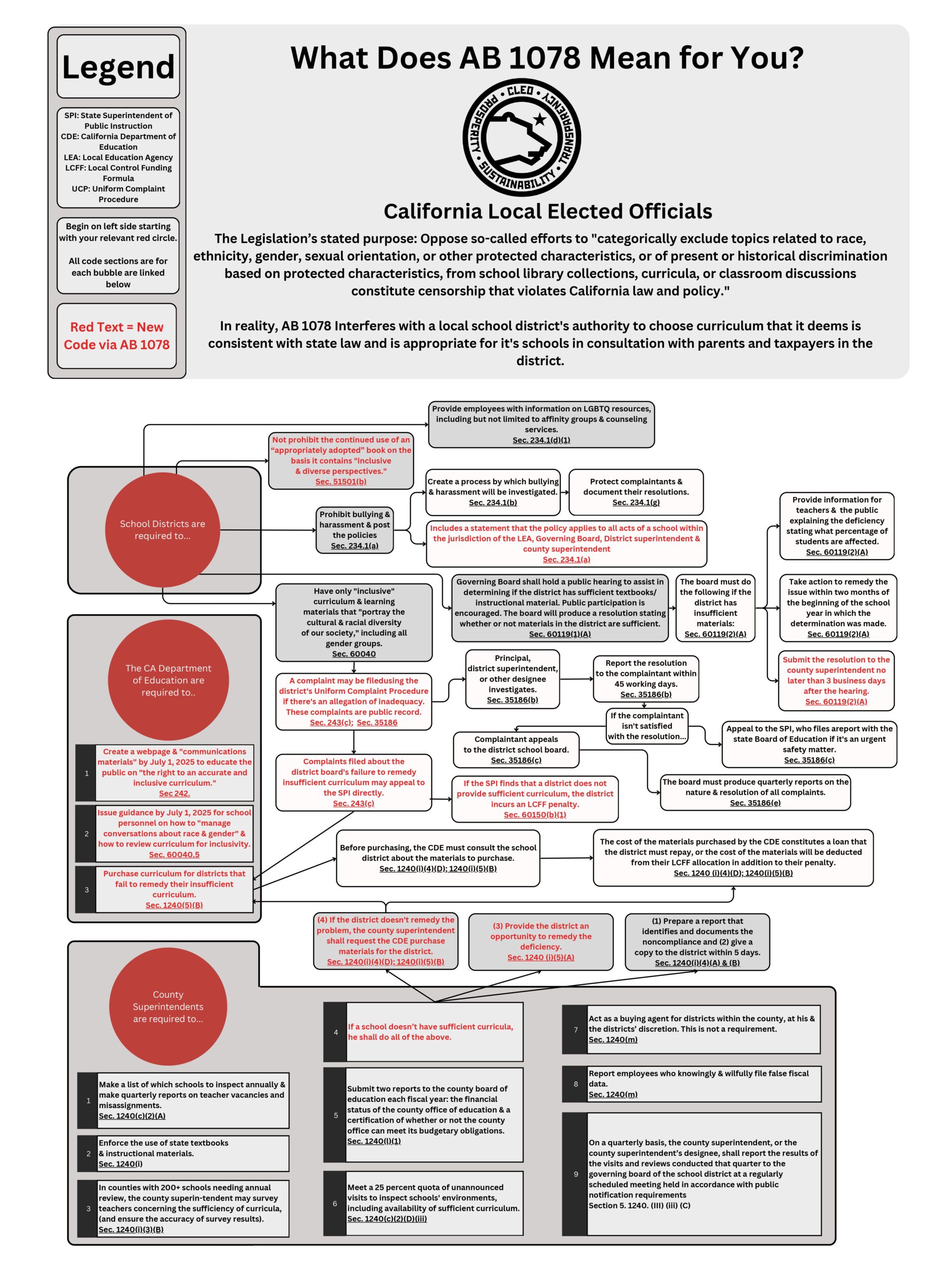- California Policy Center

Amidst growing divisiveness in California’s K-12 school curriculum, some districts have taken actions to remove politicized, racist and sexualized instructional materials that are not age-appropriate from school classrooms and libraries. These actions have angered California’s progressives and ruling elites who claim that trustees are banning books when they are simply curating them.
In their ever-growing appetite for control, the California Democratic supermajority pushed through Assembly Bill 1078, authored by Asm. Corey Jackson (D), which guts local school boards’ long-standing authority to make decisions about the curriculum and, instead, gives that power to the State Superintendent of Public Instruction and Sacramento bureaucrats in the California Department of Education.
The “book banning” mantra — repeated dutifully by Gov. Gavin Newsom and the mainstream media — is the next phase of the teachers unions’ earlier attempt to brand parents as “domestic terrorists” for speaking out against extended school closures during the pandemic.
State education statutes have long been clear about local education agencies (school districts) authority and ultimate responsibility over their curriculum. The bill was passed with an urgency provision, meaning that upon receiving the governor’s signature, that the law was in immediate effect. AB 1078 was passed out of the legislature and signed by Governor Newsom on September 25th, 2023.
What’s more stunning than the legislature passing radical legislation and the governor dutifully signing it at the behest of special interests who care little for academic integrity, is that there’s either willful ignorance or confusion about the curation of books versus banning books. Schools aren’t banning books when they decide not to include crude or inappropriate books. And they are not the Library of Congress. They don’t have every single text available to every single school and every single student and nor should they.
Lance Christensen, Vice President of Education Policy & Government Affairs at California Policy Center (CPC), stated “AB 1078 removes all legislative power given to local school board trustees by the voters who put them in office. This is the Protect the Bully Act of 2023, and the bully is the Superintendent of Public Instruction.”
Christensen provides further context. “We can have an adult conversation about California’s history — whether it be Chinese workers treated as second class citizens in the 1879 state constitution, Japanese internment camps during World War II, entire neighborhoods redlined to keep Black Californians in subservient conditions or the severe mistreatment of Native Americans — but this bill is not that. The proponents of AB 1078 are eager to confuse the thoughtful curation of books that add to the educational value of K-12 schools’ curriculum with ‘book banning’ because they want to hide what they are really pushing in schools from parents.”
It’s the unions’ go-to PR trick: distraction. Teachers’ unions are losing badly in the court of public opinion so they’ve set a phony fire to get everyone to focus on it (book banning!) — hoping no one will notice what they are introducing in schools (porn and Marxism!).
While the bill’s stated purpose is to address issues related to insufficient textbooks or instructional materials within California public schools, it creates convoluted and unnecessary requirements for districts, even in the areas where the bill seeks to address these issues.
In reality, AB 1078 Interferes with a local school district’s authority to choose a curriculum that it deems is consistent with state law and is appropriate for its schools in consultation with parents and taxpayers in the district. The bill is designed to silence parents and school board members who oppose Sacramento’s progressive agenda.
To provide guidance for districts, CPC has put together a visual guide mapping AB 1078 and the changes brought by it (in red text).
Download a fullsize PDF version of the guide here.

California Local Elected Officials (CLEO) is a membership organization that networks, educates, supports and advises local elected officials throughout California’s thousands of cities, counties, school and special districts. CLEO offers policy guidance, detailed financial analyses, legal perspectives and communications assistance to our members on principled governance. Find out more at Calelecteds.org.
Contact Us
Our team is committed to providing information and assistance to candidates and local elected officials. Communication is confidential. Please reach out if you have any questions and our team will get back to you promptly.
CLEO is a project of the California Policy Center
© 2023 California Policy Center. All rights reserved.